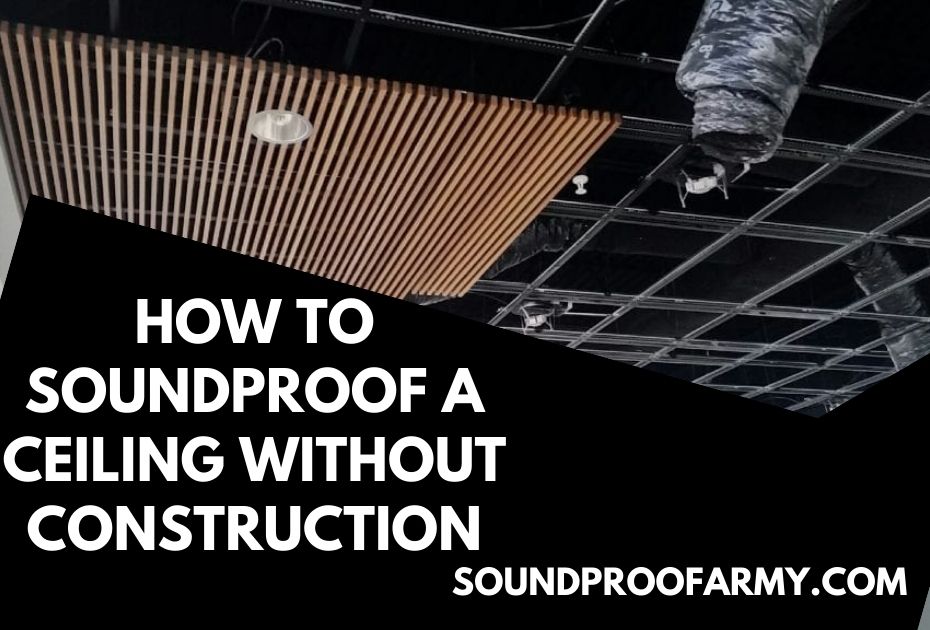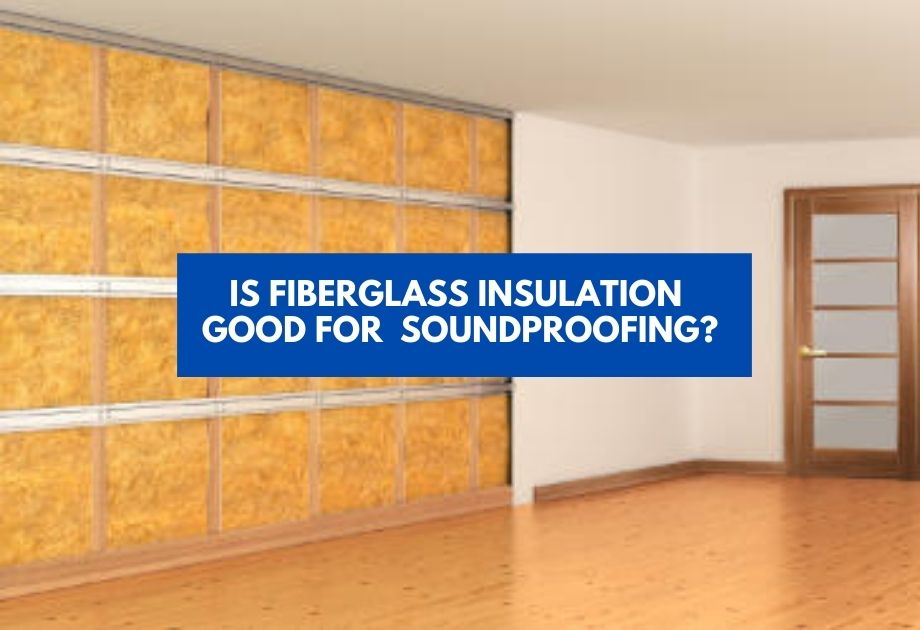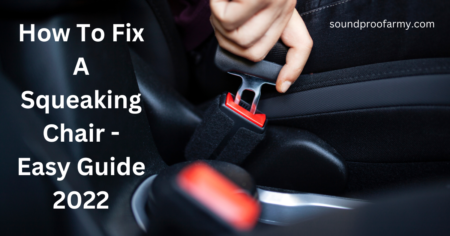Noise is a big problem in our modern world. It can be distracting, harmful to your health, and even affect how you feel about yourself. Inside the home, doors are one of them to make noise. Rather than fixing them with costly methods, let´s explore, how to soundproof a door with household items.
Follow these tips to soundproof door;
- INSTALL A SOUNDPROOF DOOR SWEEP
- REPLACE THE THRESHOLD
- INSTALL A SOUNDPROOF WEATHERSTRIPPING DOOR KIT
- USE A SEALING RUBBER TAPE
- GET NEW DOOR GASKETS
- CAULK AROUND THE DOOR FRAME
- APPLY EXPANDING GAP FOAM
- COVER YOUR DOOR WITH SOUNDPROOF CURTAINS
- ATTACH A SOUNDPROOF BLANKET OVER THE DOOR
- APPLY HIGH-DENSITY SOUNDPROOFING PANELS
- USE RIGID FOAM INSULATION OR STYROFOAM
- THICKEN THE DOOR WITH MLV
So that they no longer bother anyone in your home.
The cost of the project will vary depending on the type and extent of work, as well as whether or not you have access to necessary materials.
WHY ARE DOORS PRONE TO LEAKING SOUND?
Table of Contents
WHY ARE DOORS PRONE TO LEAKING SOUND?
Doors in our homes are often not insulated. They serve as sound barriers to a certain extent, but that’s not good enough.
When sound waves hit the door and bounce back into your home, soundproofing a door becomes necessary. Sometimes they have issues such as being:
Gaps at the bottom of the door.
A soundproof door needs to have a tight seal – but the bottom of your door is often where it leaks.
The solution? Door sweeps, or weatherstripping, installing the thick threshold or bridging the gap with these products.
These are strips that go below the doorknob and attach to both sides
Cracks between the door and the door frame
To deal with this issue you have self-adhesive soundproof door sealant, sound-deadening weather stripping, and sound-blocking door sweeps.
The self-adhesive soundproof door sealant will fill in any Cracks that exist between the frame and threshold of your entry point.
The sound dampening weatherstripping will do the same for Cracks on either side to ensure you get maximum sound insulation.
Fissures in the wall around the door frame
This problem can be solved with a compatible material to fill those cracks. such as soundproof foam, sound mat or another door.
A hollow core that allows sound to pass through the door itself
For starters, you can try attaching noise-blocking or muffling materials to the door.
You can use soundproofing tape, which will effectively dampen the sound.
Alternatively, if you have a hollow door and sound is passing through it too easily, try filling up the inside of the frame with sound-absorbing pads.
You could also hang heavy curtains on either side to deaden any sound that passes through them.
Most doors that leak sound has one or two of these flaws. You may need to use a few different methods. It will be easier than you think.
16 EFFECTIVE WAYS TO SOUNDPROOF A DOOR
Door soundproofing starts with the door itself. Essentially, all doors are just holes in our walls.
It’s no wonder then that they often leak sound – especially if you carelessly install them without a sound sealant or other sound-reducing material inside it.
The list below is made up of different soundproofing hacks that can be used to sound seal and sound-deaden a door.
So in the start, we’re going to work with that gigantic gap at the bottom of the door.
After this, we’re going through fixing the cracks between the door, door frame, as well as those in the surrounding wall.
Finally, we’ll discuss how you can improve the soundproofing by thickening the door itself.
1. INSTALL A SOUNDPROOF DOOR SWEEP
For soundproofing a door, start by figuring out how sound is leaking through the bottom.
If there’s just an inch or two of space between your floor and the threshold, try installing a soundproof door sweep to close off that gap.
These soft rubber strips are designed for this very purpose and come in many different sizes depending on how long the soundproof door is.
Soundproof door sweeps can be made out of a variety of materials, such as hard plastic, metal mesh and rubber (or just rubber) or soft foam and fabric.
The kind you select will depend on your door soundproofing needs.
For soundproofing interior doors, you should stick with the fluffy kind and use rubber sweeps on exterior ones.
These products weren’t used for soundproofing.
The rubber kind keeps bugs and moisture from coming into your home. The other kind keeps drafts out of your home, so they are called draft stoppers.
The process of installation will vary depending on which soundproofing product you decide to invest in.
You’ll need to clean the bottom of the door before attaching a proper door sweep if you’re using one with a metal part.
Whereas, self-adhesive door sweep soundproof can be put in place without any prep work.
Or in case If you want to use a draft stopper, you will slide it under the door.
2. REPLACE THE THRESHOLD
If your door is high, or if you don’t want to use a door sweep, install a threshold.
It might have even worked for a time.
But after taking one too many kicks, it’s finally loosened enough to be an ineffective defense against noise.
So what should we do to fix that? One of the easiest solutions is to change the threshold entirely.
For that purpose, you have to measure the height of the door and the area where you have to install the threshold.
Because it’s important that you know how high your threshold is and then find a replacement with at least an inch difference in height.
This way there will be no noise coming through from the bottom gap when someone steps on it or slams into it.
Before installing the new one, you have to remove the old one and clean up any residue.
You can pull the threshold out of the door frame, but most of the time you will need to take some screws off first.
Until now You should know how to put in the new threshold after removing the old one.
but first, you have to clean or vacuum, wipe the floor.
Doing so is especially important if you want to seal the threshold with the floor by using glue rather than nailing or screwing it.
because if you don’t clean and vacuum, the sound will still be able to travel through.
After the installation of the threshold, you can fill all Cracks and gaps between the threshold and door frame by using a door sweep or foam sound insulation pads.
This way sound will never be able to come through from the lower part of the door again.
3. INSTALL A SOUNDPROOF WEATHERSTRIPPING DOOR KIT
Weatherstripping is made to fix gaps in the door. It will go between the door and the frame or casing.
Weatherstripping products like self-adhesive rubber foam tape should produce an airtight seal if they are compressed when the door is closed.
The rubber foam tape removes gaps between your door and its frame with an airtight seal.
when compressed and provides decent sound insulation for doors without additional acoustic treatments installed inside their cavities.
Sometimes, these solutions come with a door sweep that has adhesive on both sides of it, so you can easily seal all the surfaces around your doors.
Even though weatherstripping products are designed for exterior doors to keep out the chill.
If you buy a D-shaped rubber strip, you can soundproof your door from the inside.
if the space on your door frame is particularly wide, you might leave them doubled up.
To start, apply a piece of tape along the top side of the door frame.
Keep in mind there are a few different options that can be used to soundproof any type of door, with solutions for small holes or large gaps.
Measure and cut a strip of soundproofing material so it fits snugly against the frame on one side, with enough overhang to cover the other edge too.
Start from the top and cut off the excess at the bottom.
If you buy a kit for weatherstrips, you can finish by putting on the door sweep. You need to clean the frame before doing anything.
4. USE A SEALING RUBBER TAPE
If the sound is leaking out of the top or bottom, consider adding sealing rubber tape.
They’re also self-adhesive, but they come in a greater variety of sizes and dimensions.
In contrast to commercially available door sweeps, soundproofing strips require no holes or screws for installation and offer more flexibility.
Such as, a 0.75-inch wide neoprene rubber strip is the perfect size if your door connects to a wider surface, but for even more options,
check out this Frost King sponge rubber tape that ranges from 0.5 to 1.25 inches in width and 18% to 56% of an inch thick.
You can also use M-D Building Products soundproofing sealing rubber tape with a 0.875-inch high profile and an adhesive back.
whereas, if you’re dealing with a colossal bottom gap, you can use soundproofing strips to seal it up.
If the door itself is hollow, try filling it with soundproof foam or sound paint from the inside.
5. GET NEW DOOR GASKETS
Sound-sealing door gaskets are more complicated to put on than self-adhesive weatherstripping tape, but they do a better job of keeping the noise out.
The problem with self-Adhesive products is that it’s not very sticky.
It will eventually loosen up and fall off, creating a sound-leaking hole in your door again.
Of course, you can seal your door with weatherstripping tape and It is easy and cheap.
But if you want a better way to do it, use gaskets. Gaskets are different from weatherproofing tape.
Gaskets do not go between the door and the frame.
As a result, they remain aerodynamic and won’t bend or warp when pressure is applied.
And since you will be screwing them into the door frame, they never move around.
A sound-sealing door gasket should be put in place before weather sealing to avoid compromising its integrity.
Gaskets should fit the frame of the door without any gaps.
The gasket will need 2 screw holes per side, with screws long enough to go through both panels and into the framing on either side.
Measure where your screw holes belong from corner to corner across the width of your opener or handle then drill out those corners on each panel.
Screw them together by hand and tighten with a screwdriver along the way until everything is nice and tight so it doesn’t fall apart when you use it for real.
it is important to remember about the door gasket soundproofing that your sound-sealing gasket should be installed before weather stripping.
The soundproof door sound sealing is accomplished by installing a specially designed rubberized gasket to the inside of either the top or bottom panel, depending on whether it’s an interior or exterior door.
6. CAULK AROUND THE DOOR FRAME
Now that your door cracks are sealed off, the ones around the frame will probably become more apparent.
You wouldn’t think any noise would be able to get in through there, but it can.
If you feel air currents blowing around the door even with weather stripping products in place, the sound is getting through the wall.
Fortunately, a sealant should be enough to plug any leaks on the outside.
You’ll have to be careful of what type of sealant you pick though.
Acoustic caulk is soundproof and does the job well, but it’s expensive. Silicone caulk will also work fine for this task.
Don’t forget to let your sealant dry before you put up the door too!
That way any sound that gets in through a crack won’t get out once it enters the sealed room on the other side of the door.
Plus, the increased flexibility of acoustic sealant makes it easier to install than standard caulk.
However the process is very simple, it just can’t be rushed.
The sealant comes in 10-30-ounce tubes with sharp ends, which makes it easy to get caulk into corners and seams.
There are also a variety of colors to choose from, so you won’t have to worry about it looking unsightly.
Once applied and dried, soundproof caulk is completely removable with just a scraper or putty knife for any touch-ups that might be necessary for the future.
You will need a caulking gun to squeeze the product out and put it in the right place.
Caulking guns come in different sizes, so make sure you get one that’s appropriate for the tube that you have.
Sealant should never be applied to a dry surface.
Instead, it needs to have an adequate amount of the area you want before applying it with your hands or tools of choice.
Precautions
Before going any further there are some helpful tips for getting started and preventing future problems:
- wear gloves anytime touching sealant,
- apply in small bead-like portions by rubbing one section at a time against itself as if laminating paper together,
- smooth out beads into cracks using fingers (not knives),
- do not allow children near the sealing process because they may get too excited and forget about safety precautions
7. APPLY EXPANDING GAP FOAM
If the gaps around your door are too large for sealant, you’ll need to beef it up a bit. One way to do that is with expanding foam gap filler.
It’s a soundproofing material that you can buy in any hardware store and spray onto the door frame.
It expands to fill gaps of up to one inch, creating an airtight seal as it dries.
For instance, if the thickest point on your door is three inches away from the wall or frame.
Then you’ll need to apply at least two layers of expanding foam.
And make sure that you’re not spraying the soundproofing material onto anything but the door frame because it might damage other surfaces (such as your carpet).
Before you start spraying your door, read the instructions on the spray can.
They should indicate how far you need to be from the door for soundproofing purposes.
You’ll want to make sure you wear gloves when applying this product. Not only will it protect your skin and body from potentially harmful chemicals.
But it can also be a little difficult to remove from the surface of your skin.
If you use a product, you will want to use water first before using the foam.
When you are ready to start, then start at the deepest part of the crack.
The foam might expand out a little, so you want to make sure that it is not going outside the soundproofing area.
Use your finger or a piece of paper as an indicator of where you have applied the product.
Keep working until all parts of the soundproofed door are covered in foam and sealed with sound dampening sealant for optimal sound blocking ability.
Allow it to sit for about 30 minutes before cutting away any excess with a saw or knife.
The foam should leave some nubs so that you can seal the gap between your door and wall before coating with paint.
8. COVER YOUR DOOR WITH SOUNDPROOF CURTAINS
Even with the door and wall completely sealed, noise can still pass through if the door itself is hollow.
To stop this from happening, you’ll need to find ways to fill up that space from the outside.
Covering the door with soundproof curtains is one of the simplest and most attractive investments you can make for improved noise control.
You’ll want sound-proof curtains for the door if you have a long hallway or high ceilings, as sound will bounce back and forth more easily in these cases.
To begin installing your curtains, you’ll need to get a curtain rod and have it attached to the wall above the door or ceiling.
It’s important to cover the entire door without leaving any gaps and should leave about half an inch of fabric on all edges.
You should put some fabric on the floor.
This way, when you need to leave the room, you can swing the curtains out of the way and go through the door.
Before drilling into a door or wall, make sure you know that it is hollow.
In fact, It would be pointless to fix other issues if you need to take the whole door out.
9. ATTACH A SOUNDPROOF BLANKET OVER THE DOOR
Soundproof blankets are one of the best sound dampeners available for doors.
They’re made with sound-absorbing material that helps prevent sound from traveling through a door.
If you want to soundproof your door, attach one over it and then lower the curtain or door handle so no light is visible under it.
This will help isolate any noise coming from inside as well as outside.
However, you should keep in mind that the result will look more industrial than decorative.
There are fewer choices for the colors and the material of the blankets, but you can still find ways to make it all look presentable.
There are a few ways to blanket the door.
First you have to attach the blanket above the door and roll it up when you don’t need it.
You’ll have to get some ties and nails or screws so that it doesn’t fall down.
When you want complete silence, unroll the blanket covering a few inches around the door as well.
If you wish to secure the sides, use loops or elastic hair ties and nail them to the wall.
Then wrap the blanket around the tacks so it’s flush against the wall.
To attach your space blanket to the door permanently, you can nail it onto the exterior or use Velcro.
However, this will have some unattractive fabric that surrounds the door left over – so you could fold these edges inwards or trim them to size using scissors.
Instead of a regular soundproof blanket, you might want to consider this door panel sound barrier.
Along with different colors and dimensions, the doorknob cutout can be customizable as well – but naturally, the customized touches also push up the price.
10. APPLY HIGH-DENSITY SOUNDPROOFING PANELS
To compensate for the inevitable noise that a door will leak, consider installing high-density soundproofing panels.
Choose these products over blankets, curtains, or other furniture that might need walls to attach to and create an eyesore.
As opposed to thin sheets of material like blankets, these heavy-duty boards are easy to cut into any shape needed to fit around your doorframe.
The Acoustix chemical-free Burton panels in marble gray.
Their overall density is 12.5 pounds per cubic foot, and the 12-inch squares come in 5-piece packs, so two or three are needed to cover one side of your door–or four if you want it to cover a larger area on both sides.
This will block 85% of the sound frequencies bouncing around the room from getting into your door,
while also preventing some of them from penetrating for even better acoustical absorption.
The BXI fiber panels are about the same size as the Burton Acoustics ones. They have a similar NRC rating.
The panels come in squares that are 16 inches by 12 inches, and they come in packs of 6 pieces.
That means they will cover a surface area of 7.7 square feet for each pack you buy.
They also come in black, gray, smoke gray, and shallow camel (light beige).
To install the panels, you can use 3M VHB tape. It is wide and sticky. Cut a piece to fit the top edge of your door.
Press it onto your door, then remove the backing and stick on your panel.
Then trim off any extra pieces and tape down the sides that are not stuck yet with more 3M VHB tape,
so no light enters through them when you open them.
11. USE RIGID FOAM INSULATION OR STYROFOAM
An excellent soundproofing solution for doors is to use rigid foam insulation or styrofoam.
These materials are available at most hardware stores and will do a great job deadening sound.
The first step in soundproofing with these products, though, is to remove the door from its hinges so you can reach the inside of it easier.
You’ll then want to seal off any gaps using adhesive tape before filling them up with your chosen sound-deadening material
If you don’t want to take off your door, then you can do the task while it is up.
You will need to remove the doorknob before you start attaching the foam.
When it is flat, cut the foam down and make an opening for your handle.
You could also use foam insulation or styrofoam, but these would not be as effective as the other project listed on this list.
When you finish making the insulation, put it on the door with Velcro, Or use tape or pins.
Then put back the door handle and the door if you remove its hinges.
12. THICKEN THE DOOR WITH MLV
This method of soundproofing is different from the previous one because it focuses on the door itself, rather than its seams.
The MLV consists of a thin material that increases the density inside your doorway and serves as insulation to protect against drafts, rattling windows, and other noise.
It is dense enough to block noise while still being flexible and thin for most practical purposes.
It’s also water-resistant and exceedingly durable in comparison with styrofoam.
One of the key advantages MLV has over foam is that it will stop sound waves effortlessly.
Its main disadvantage is its price, which is much higher than foam panels.
To soundproof a door, you’ll need to find some material that fills the width of the opening and is at least as tall as your door.
Once you have it, consider how you want to attach your vinyl.
Here are some methods: acoustic sealant; double-sided tape; metal strips made specifically for attaching MLV (sound insulation) to your doors.
All these methods are sound-proof, so you just need to choose the one that works best for your situation.
Once everything is set up and ready go ahead and install it on your door with some MLV panels in between any gaps or seams.
You’ll want to make sure the material isn’t touching anything else because this will cause sound leakage at every point where they meet.
Finally, smooth out all of the wrinkles before replacing your door—you don’t want sound waves bouncing off these surfaces as soon as they hit them.
13. GET RID OF THE DOOR
If you’re struggling with the door, move on. It might be time to cut it from your life entirely by bricking over it. Walling up a door is actually easier than you might think!
Continue ripping the frame off, then build a stud grid inside the opening before filling it up with drywall and covering that with sound-blocking material.
While soundproofing a new door is pretty similar with respect to other renovations on walls, the process isn’t as straightforward for everyone.
You will need an alternative way to get into the room. You should do this so that the door does not cause any more problems in the future.
CAN YOU SOUNDPROOF A DOOR WITH HOUSEHOLD ITEMS?
If you don’t feel like waiting for your products to arrive, try using household items that do a great job of soundproofing.
Here are some examples.
HOUSEHOLD ITEMS YOU COULD USE
To make a door more soundproof without the need for any special products, you could try stuffing towels or rugs under the door.
You can seal the other edges of the door with something else.
It may be difficult, but there are ways to make a thicker door that will also cover the sides.
such as:
- If you use regular curtains instead of soundproofing curtains, then you can use more than one layer.
- Go to the attic or basement and get out old, thick blankets (you can roll them up above the door)
- It is smart to put a rug or carpet over the door if you don’t plan on using it. It will be a tapestry.
- Gluing a yoga mat or foam tiles to the door can be helpful for keeping outside noise out and inside noises in.
- Furniture like wardrobes and bookshelves can be moved over the door, sealing it off permanently.
MAKING A DIY DOOR DRAFT/NOISE STOPPER
All draft stoppers are made of fabric, stuffing, and something to hold the material together.
Without knowing how to use a sewing machine, just use hot glue or fabric adhesive.
For Stuffing, you can use something lightweight such as polyester fiberfill or old pillows/clothes, rice, cotton, or pool noodles, you don’t use anymore.
whereas for fabric, you want to find a fabric that is thick enough to absorb noise, but not too cumbersome or heavy for the draft stopper.
Look for sound-reducing materials like velvet, fleece, cotton batting, wool felt (you might need two layers).
And for Closures use Something flexible like ribbon will do the trick.
Before you can fill the draft stopper, make a fabric sleeve.
You will need a stretch of fabric that is wider than the door and longer.
This will go on both sides of the door.
The side of the door that swings out should have a single piece on it, with dimensions much shorter than those of the opposing side.
This will ensure that air is prevented from leaking through the whole width of the door and prevent noise pollution.
If you want to use stuffing that already has a shape, like a pipe insulation tubing, make sure to measure the sleeve first.
After you choose your fabric, the next step is to slide it all under the door.
Measure where glue or stitches would need to go and then mark those lines with chalk on both sides of the doorway.
Alternatively, attach a strip of Velcro onto this end so that when you enter and exit from either side, it holds up righteously.
SOUNDPROOFING INTERIOR VS. EXTERIOR DOORS
Soundproofing a door is not an easy task.
Interior and exterior doors come with different soundproofing challenges.
Exterior doors usually have solid cores, meaning the ambient noise doesn’t pass through them as easily as it does in interior rooms that use hollow core materials for their door frames.
This means an external entryway can be a great way to keep unwanted sounds out of your home,
even if they don’t offer any better insulation than other types of design approaches.
Interior doors have more than one function. They are not only a visual separation of rooms,
but they also keep sound from passing through to other parts of the house.
How can we approach soundproofing these different types while taking their properties into consideration?
However, soundproofing an exterior door will usually be easier than soundproofing an interior one,
because you can work on the surface of the door.
Generally, you cannot use a draft stopper on your front door because it is not waterproof.
All materials and gadgets that go on an exterior door must be able to withstand weather elements.
You can use a variety of methods to soundproof an exterior door, including rubber door sweeps, weatherstripping tape, and foam.
THE COST OF SOUNDPROOFING A DOOR
The cost of getting your door repaired depends on the extent to which you’ll need work done.
Some products are relatively inexpensive, while others can be as expensive as a new iPhone!
The most expensive soundproofing solution is to remove the door. It can be a lot of money, but you might also want a solid-core door.
The most basic cost $150, but if you want something special, expect to pay at least $400.
Balance is key. Investing in a high-quality door with an STC rating of 65 or 70 can be costly, but it may not even need to be replaced at all!
If you only install weatherstripping tape and soundproof the bottom edge of your door by installing a sweep,
that will cost much less than replacing the entire thing – under $20 for just these two steps.
Soundproof curtains, blankets, and fiber panels are all ways you can cut down on outside noise.
Soundproof curtains start at around $50 while sound-blocking blankets go for less than that price point.
If you want to cover the whole door with a panel of insulation it will cost more money but is worth every dollar spent.
You may not need to go out and buy expensive soundproofing equipment if you’re looking for something less perfect.
There are plenty of household objects that could work as well,
but it’s important to know how much noise is getting into your room before installing anything just in case the project doesn’t pan out perfectly.
Soundproofing a door can be more affordable than other projects so this one should definitely be considered first!
MORE REASONS TO SOUNDPROOF YOUR DOORS
Believe it or not, soundproofing your door is still an option.
If you want to make sure that the outside world doesn’t have any effect on what’s happening inside of your home and vice versa.
There are many ways in which this can be done without increasing the amount of effort needed by too much.
At that time you’ve been through many options, and feel that it’s not worth the hassle.
There are many reasons to seal your doors, but the most important one is that they let in bugs and water.
Doors can also cause high AC costs and noise pollution which takes a toll on people’s health.
Soundproofing your doors is an important step for anyone who shares a space with others or wants to feel safer and more secure.
Soundproof doors not only eliminate noise but also make you feel safe in your home.
You can mix and match these methods of soundproofing depending on what type of door you have, how much money you want to spend, etc.
But ultimately it’s up to the individual as there are many ways.
FAQs
Why soundproof the door?
Noise is just as bad for you as it is for your children, which means soundproofing your doors can benefit everyone in the home.
Plus, even if the sound doesn’t bother you now that you have a family to take care of and are deep into adulthood.
you never know when conditions will change or how old (or young) one might be when they experience hearing loss.
I’m dealing with an exterior door: do I need any special tools?
If you’re installing soundproofing on an external door, keep in mind that different types require their own toolsets.
For instance, fiberglass insulation needs a staple gun while rubber weather stripping requires adhesive sealant and screws.
Why does it matter if my room is well-soundproofed?
It can make your life easier in many situations, from trying to sleep better at night to practicing music without annoyance for those around you.
A poorly manufactured wall can also act as a source of noise pollution from outside sources.
This may be especially bothersome when you’re trying to stay focused on work!
How much noise reduction can I expect?
You will be able to reduce the volume of your neighbors’ conversations, loud music, and other noises by up to 50%.
You may not dampen the level of conversation that is inside our own home but this is a great way to cut down on unwanted noise.

![How to Soundproof a Door with Household Items [14 Effective Ways]](https://soundproofarmy.com/wp-content/uploads/2021/07/How-to-Soundproof-a-Door-with-Household-Items.jpg)


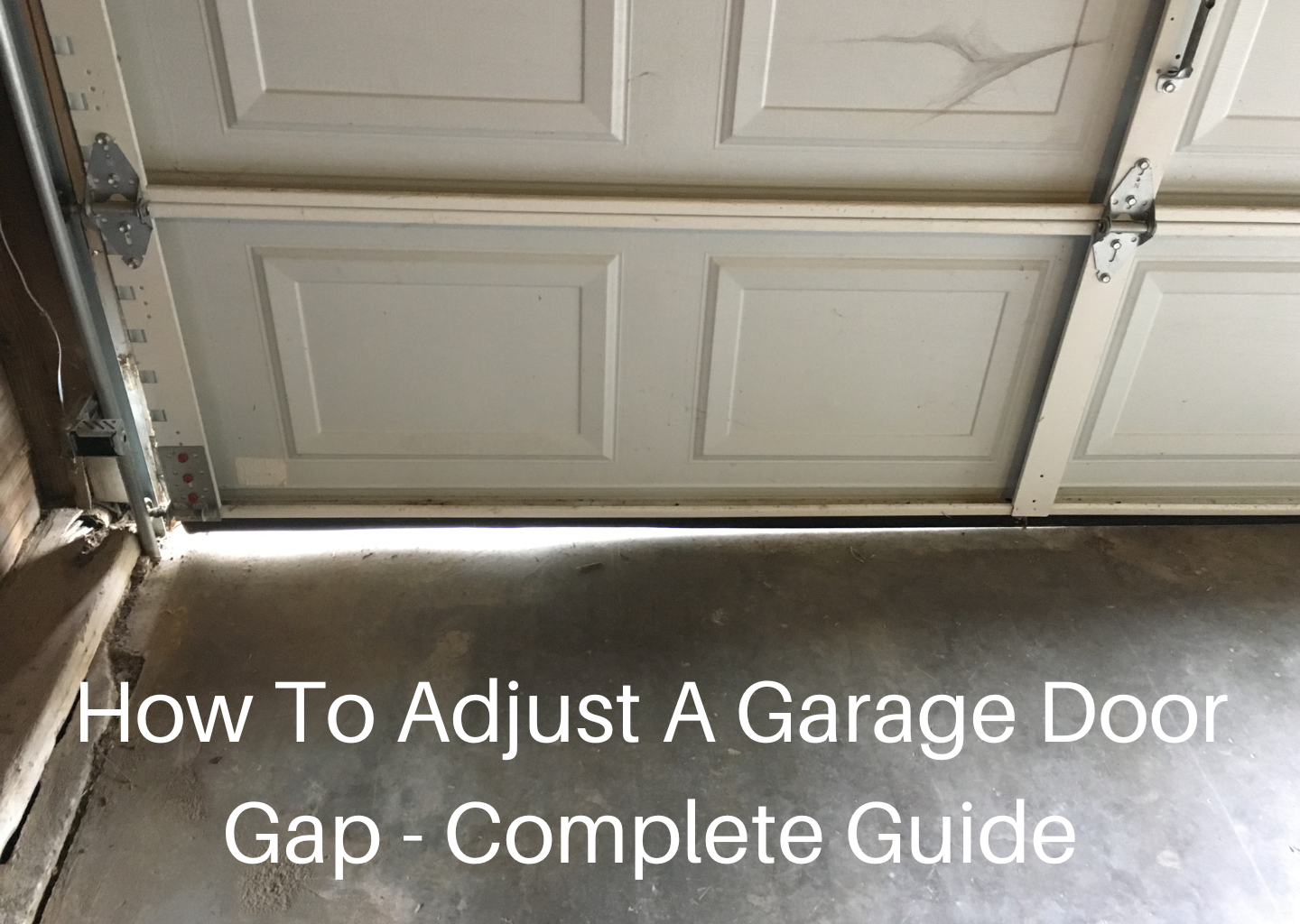
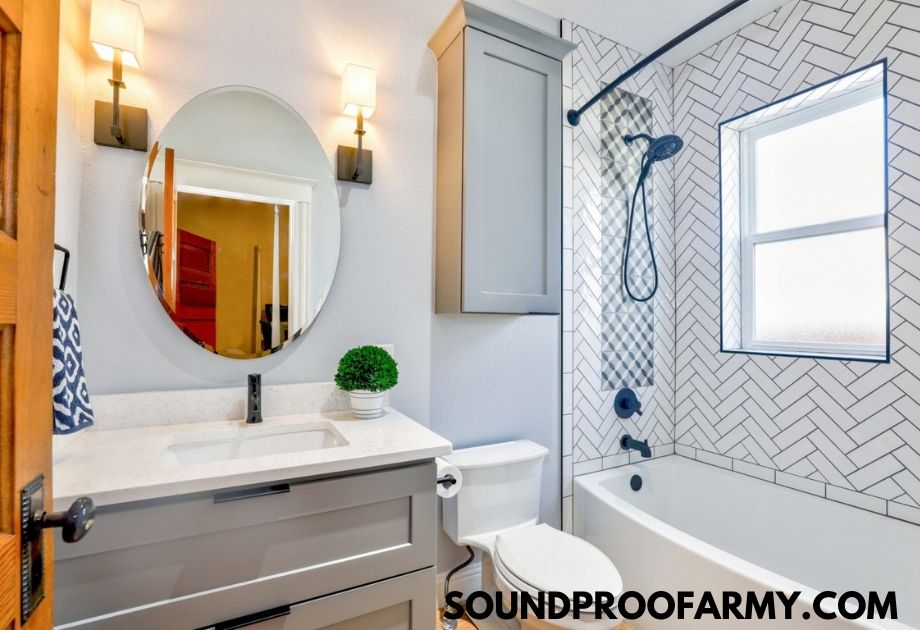
![How To Soundproof A Basement Ceiling Cheaply [9 Ways]](https://soundproofarmy.com/wp-content/uploads/2021/06/cheapest-ways-to-soundproof-basement-ceiling-Simple-DIY-Hacks.jpg)
